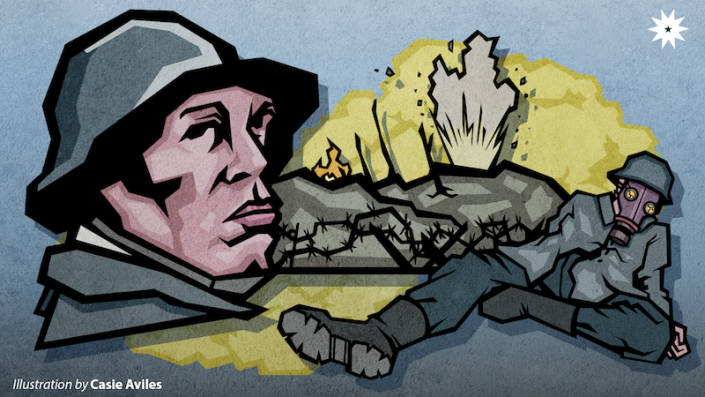Variety
After the slap that overshadowed the 2022 Oscars award show, the 95th Academy Awards is certainly expected to stand out and be better than past ceremonies; this pressure is perhaps what contributed to the intriguing list of contenders for the Best Picture category.
Countless fierce and hot debates have stirred about which film will rise to the top this year, with the nominee list consisting of 10 well-deserved popular choices. From intimate dramas all the way to military action, the list has almost all bases covered in terms of genre, which will surely have the audience at the edge of their seats.
The LaSallian reviews the 10 nominated films for Best Picture and predicts their chances of bringing home the title.
10. Women Talking, Angel
For a film whose premise is exactly its title, Sarah Polley’s Women Talking is quite a riveting watch. The movie describes itself as “an act of female imagination”—a notion that is supported by its stellar female-dominated ensemble—and tells the hard-to-stomach story of women in a colony abused by men they thought they could trust. Each woman’s performance is equal parts gutting and emotional and makes for a multi-layered and intriguing dialogue.

Rooney Mara delivers a powerful performance as the soft-spoken yet firm Ona, often presenting wise and mature viewpoints characteristic of her role. On the other hand, Claire Foy and Jessie Buckley, who play Salome and Mariche respectively, are infused with rage, leading their characters to often butt heads in compelling and forceful dialogue. Polley does well in the direction the movie takes and accomplishes portraying every feeling possible within the spectrum of female rage.
Although the entire plot hinges itself on the abuse these women experienced, the abusers are never quite shown on screen, and rightfully so; because this is a story where the women are the focus, and the men, faceless villains.
What are the odds: Although definitely one of the most powerful films to ever grace the silver screen this Oscars season, the awarding body has never been one to reward spunk and bravery—especially when focused on women’s rights.
9. Triangle of Sadness, Andy
Over the past decade, writer and director Ruben Östlund’s dark comedies have cleverly deconstructed the absurdities of the human condition. In a year dominated by class satires such as The White Lotus and The Menu, it’s fitting that this trend would culminate into the nomination of the Triangle of Sadness, a three-part narrative demonstrating the push-and-pull of power between the rich and the poor.

This film is a sleek pseudo-episodic absurdist comedy that is also a masterclass in restraint. Östlund rarely resorts to jarring jump cuts and cinematography; rather, he executes sweeping, elegant transitions between takes with the confidence of a true auteur. This novel yet refreshing direction extends to his vast and talented ensemble. Zlatko Burić plays an eccentric Russian capitalist who toes the line between endearing and despicable. However, standout Filipino actress Dolly de Leon steals the film’s final act through her captivating performance as the stoic Abigail and how her polite obedience drastically transforms into the personification of the sinister effects of society’s omnipresent class divide.
What are the odds: Triangle of Sadness is one of the films where its best picture nomination is its win. Östlund’s director and screenplay Oscar nominations are already a massive boost to his resume. Besides, can we really expect the Academy, infamously an elite group of the ultra-rich, to vote for a film that pokes fun at their lavish lifestyles?
8. Tár, Terra
Tár is a rare, refreshing conundrum of both loud and quiet, surreal and sober, coherent and discordant; as director Todd Field takes us into the shifting, uncertain landscapes of the proud mind of Lydia Tár (Cate Blanchett), a world-renowned orchestra conductor accused of sexual abuse, we begin to doubt ourselves of things we have seen, heard, and felt. But such is the delicate nature of the artistic genius and perspective on cancel culture that the film so deftly undertakes.

From musical score to cinematography, Tár leaves no room for want as it marvelously portrays the cold realities and unforgiving power dynamics in the Berlin Philharmonic. One of Tár’s strongest points is Blanchett’s electrifying performance as the film’s titular character, a powerful woman quietly teetering on the edge of madness. Each scene often leaves a viewer with more questions than answers—but not tediously so: Field’s direction and the film’s air of mystery make each layer of the 158-minute runtime delicious to carefully unravel.
What are the odds: In all its glory, Tár presents a scathing account of cancel culture and lends an almost-empathetic ear toward power-tripping artists, but it rightfully crucifies its protagonist for her abuses and wrongdoings. Both may not fly with either end of the spectrum at the Academy, arguably the most powerful institution in an industry abundant with both abuse and ostracization.
7. All Quiet on the Western Front, Aaron
Edward Berger’s nitty-gritty counterattack to films that romanticize war proves that one of humanity’s darkest times are not mere triumphs to be celebrated by pop-culture. Adapting the same name of the novel, Netflix’s All Quiet on the Western Front is a nihilistic, demoralizing, and somber depiction of one of World War I’s more reprehensible perspectives—the German Empire.

The 137-minute epic holds no corners in portraying the harsh realities of war. Austrian actor Felix Kammerer nailed his performance as Paul Bäumer, delivering a blitzkrieg of emotions through the lens of the 17-year-old as he enlists in the German Army with optimism, only to suffer a grim fate of seeing his closest comrades die as cannon fodder. The minimal usage of CGI, strong focus on practical effects, and faithfulness to the source material are this film’s saving grace—rendering it a must-watch for history buffs.
What are the odds: All Quiet on the Western Front deprecates Hollywood’s love for beautifying the horrors of war. However, it’s also one of those films that might suffer from the shell shock of possessing a niche cast. Additionally, this film’s flanks are open to one criticism from the Academy—this may just be another Saving Private Ryan clone.
6. The Banshees of Inisherin, Tin
Director Martin McDonagh’s skillful command of dark and mordant comedy shines in The Banshees of Inisherin. With a backdrop of lush landscapes and vast waters, the film illustrates the abrupt collapse of a long-term friendship through a lacquer of tenderness, savagery, and existentialism. The dreary indents of the narrative walk the audience through the caustic relationships of unique yet erratic individuals on the fictional island of Inisherin as they live alongside the Civil War taking place in the mainland.

Exhaustive in its efforts to convey estrangement, the film flits between the consistent utilization of sharp dialogue and repeated visual cues to exude vulnerability, hinting toward the widening distance between two former friends.
The Banshees of Inisherin is symbolic in nature, drawing parallels between the raging war and a waning friendship, and scrawling pictures of mortality by pitting life’s simple pleasures against the inevitability of death.
What are the odds: Visually enthralling and scathingly melancholic, The Banshees of Inisherin is able to turn an absurd initial premise into a profound and lyrical narrative. However, with a wide array of prominent subjects tucked under its pertinent plot points, it runs the risk of confounding the audience and steering them away from grasping the film’s principal motif.
This is part one of The LaSallian’s reviews of this year’s Best Picture nominees. The remaining nominees in the running are discussed in Part Two.
